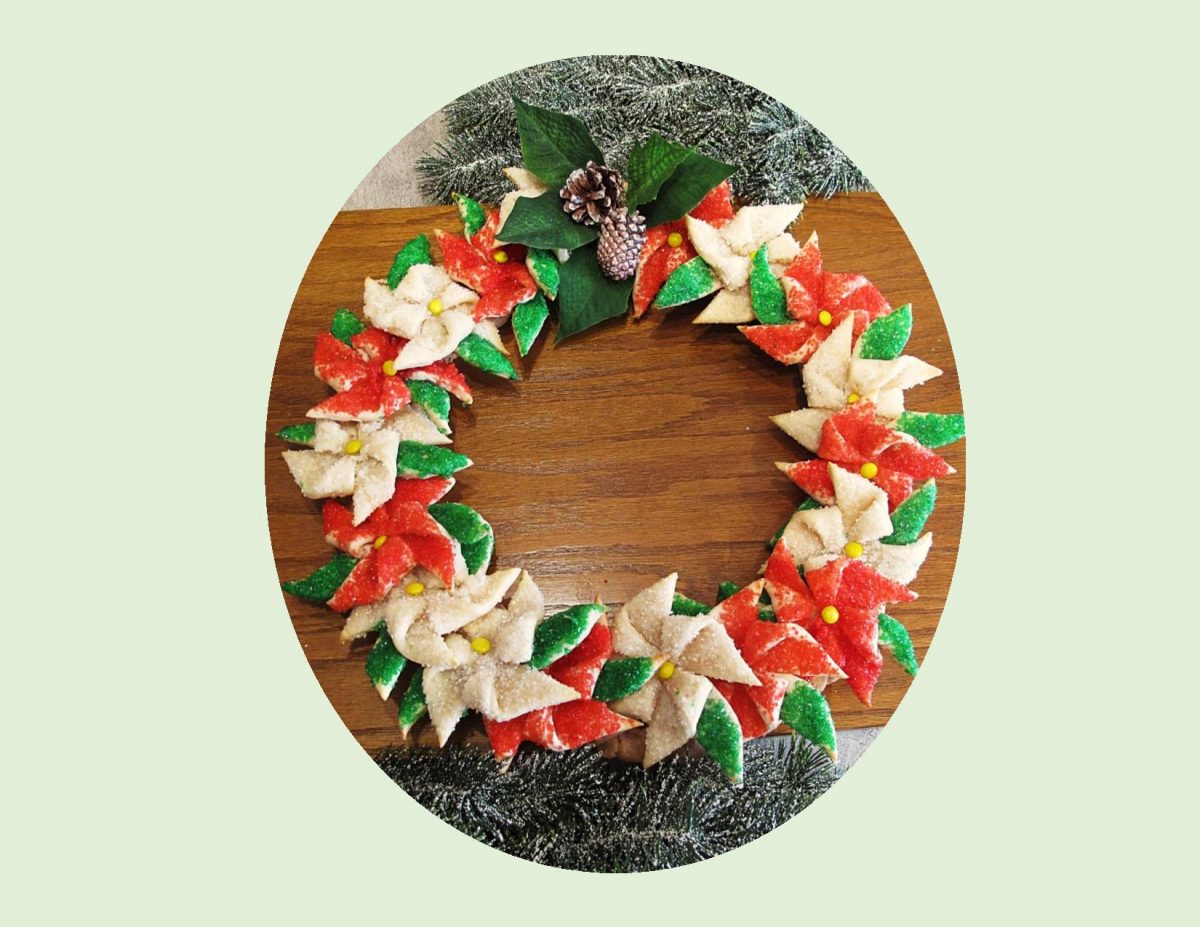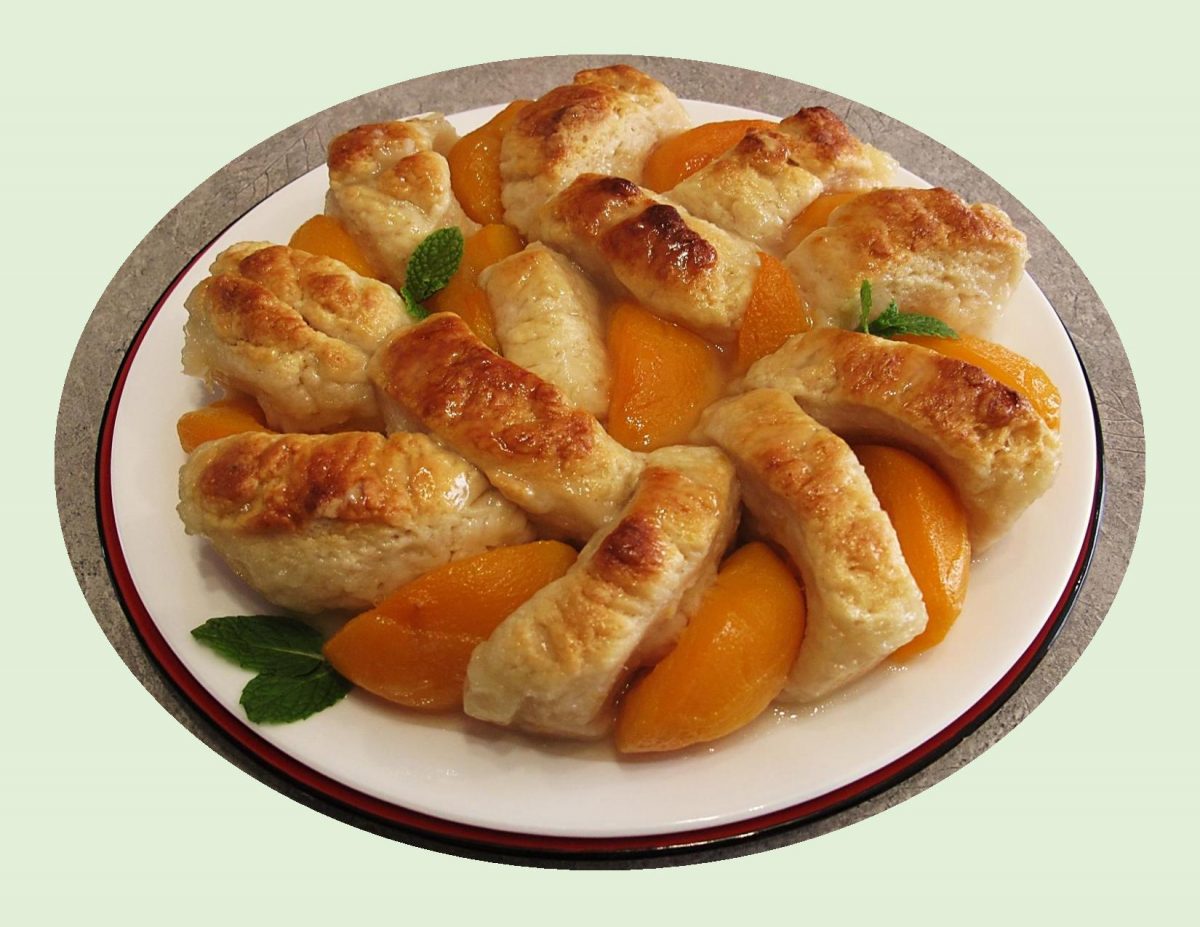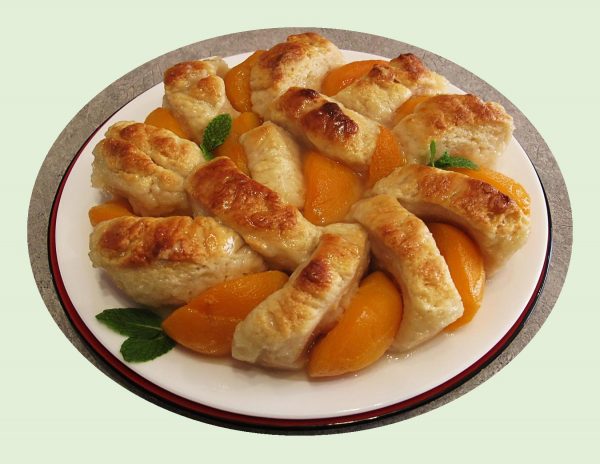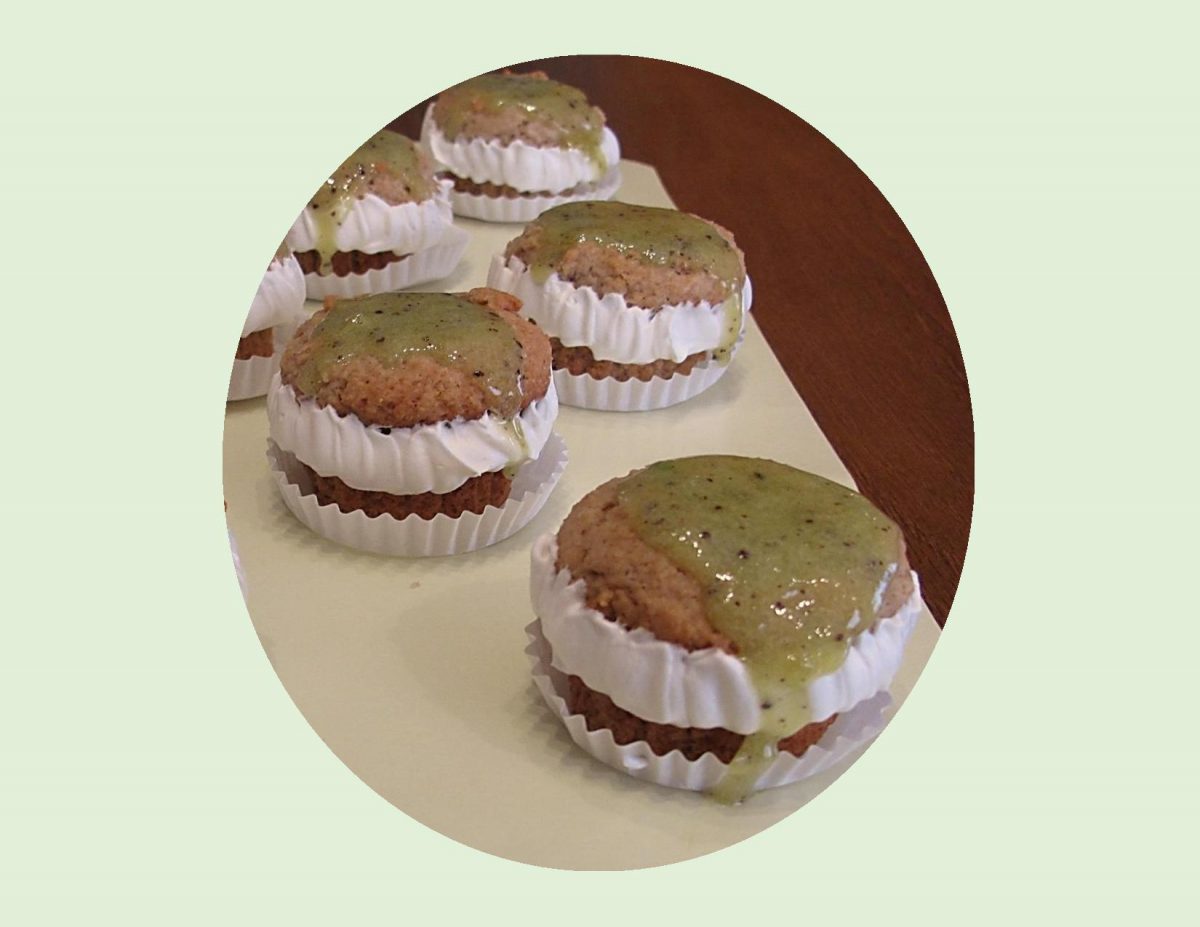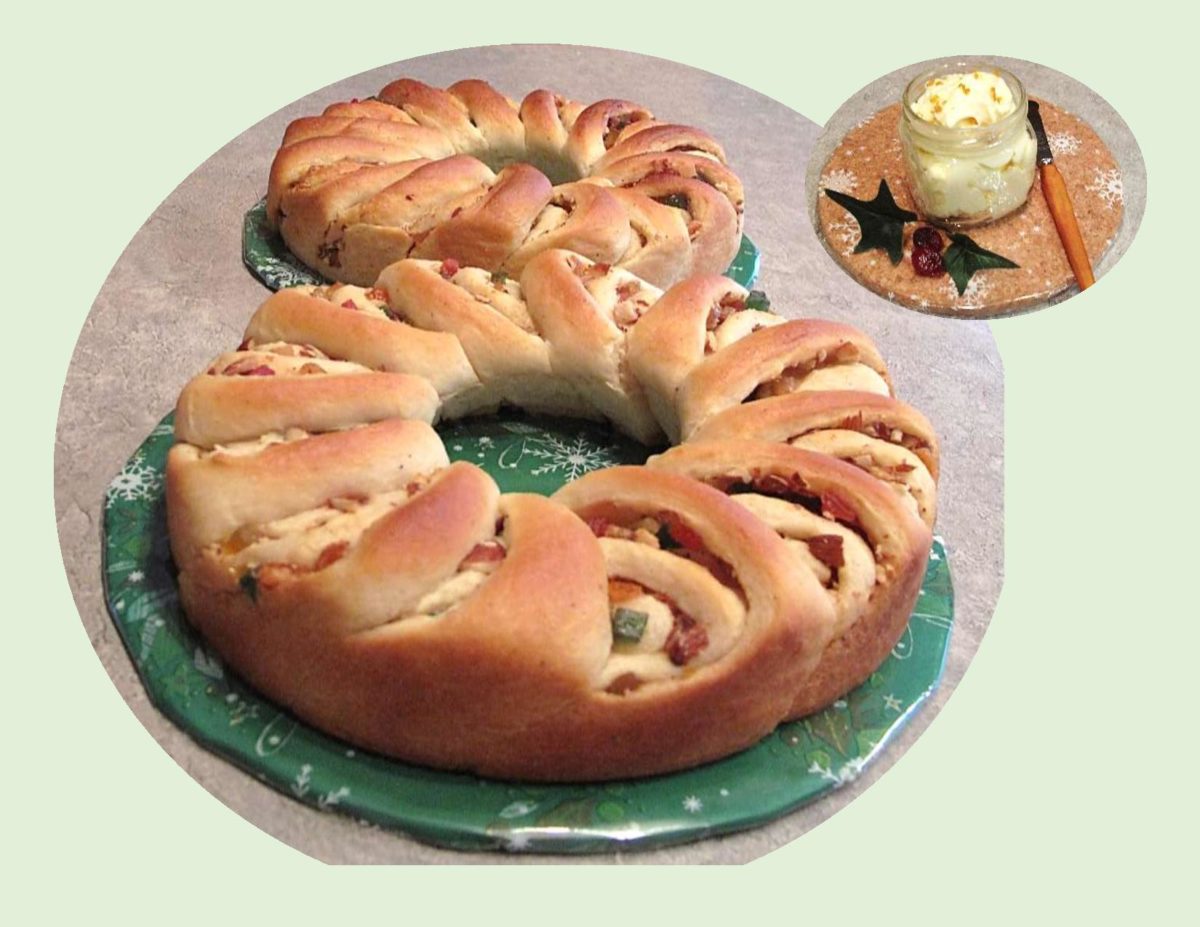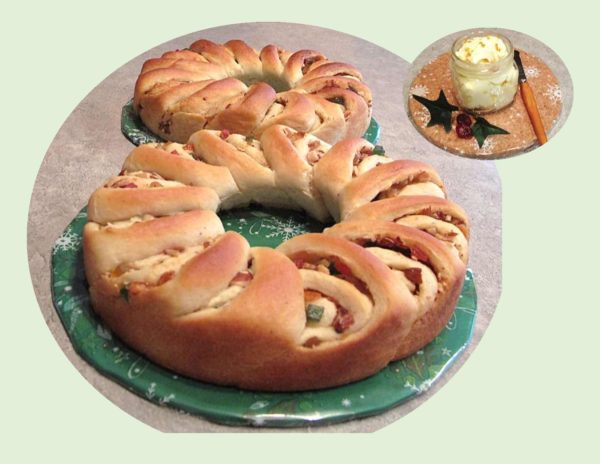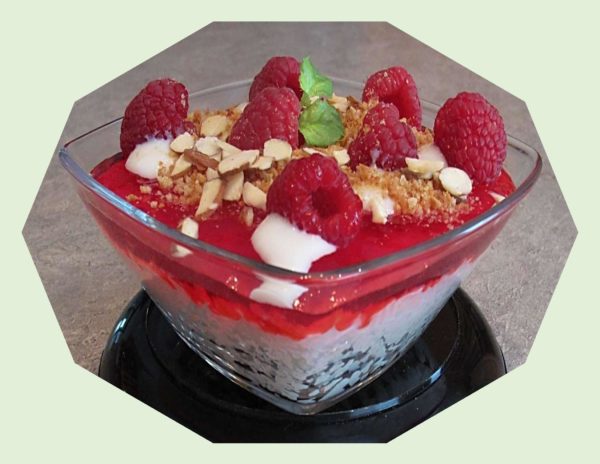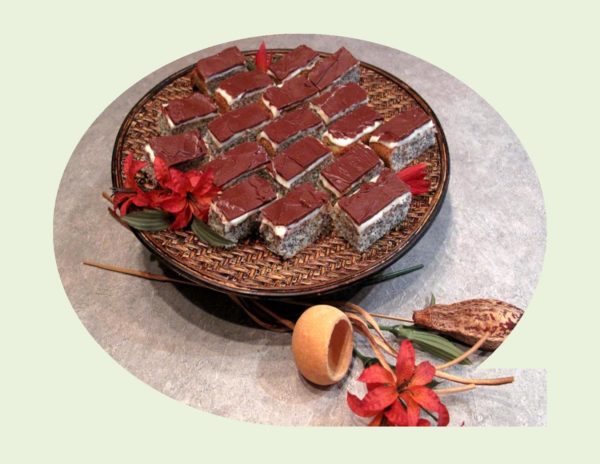July is such a wonderful month. The weather’s warm, there’s still plenty of summer left, and the produce is literally amazing.
Midsummer means the farmer’s markets are brimming with great fruit & veggies. With such a colorful bounty of goods, we can settle into our summer cooking routines with tasty meals hot or cold.
But, even in summer, we sometimes crave ‘comfort food’ such as a ‘hand pie’. The humble hand pie goes by many different names: call it a pasty, a turnover, an empanada, or a ‘Bedfordshire clanger’….
A Bedfordshire Clanger dates back to at least the 19th century. It was typically made for agricultural workers to take with them to work as their lunch. The original pastry was made from suet and cooked by a boiling method. There is a theory that the pastry crust was not originally intended for consumption but as a vessel in which to protect the filling from the soiled hands of the workers.
The clanger originated from the county of Bedfordshire, a small, low-lying and predominantly agricultural county nestled in the east of England and adjacent counties, including Buckinghamshire and Hertfordshire.
The name is as intriguing as the food itself. The word clanger, it had been suggested, referred to the mistake of mixing sweet and savory fillings. But a more likely explanation was that in nearby Northamptonshire dialect, ‘clang’ means to eat voraciously.
Knowing their husbands would need lots of protein and carbohydrate sustenance, homemakers came up with the brilliant idea of a doubled, loaf-shaped pie. One end contained a savory filling that used the famed pork of the area while the other end was filled with stewed apples (made from local apples) as dessert. So, the two fillings didn’t combine, there was a ‘pastry wall’ in between blocking any flavors from mixing. A ‘secret code’ denoted which end was meat, and which was dessert: two knife slits on one end of the pastry top means meat, three small holes on the other shows the sweet. This was brilliant, an entire meal for the field workers – handheld, portable and delicious.
The version we have today is not its beginnings but its evolution. Once you’ve nailed this basic Bedfordshire clanger recipe you can experiment with all sorts of flavor combos, there’s really no limit to what you can combine in this savory/sweet pastry.
Since Brion takes lunch to work, I became intrigued with the idea and decided to get creative with the fillings. That way I could make a variety and freeze them and use as needed. These tasty little ‘clangers’ can be served as the main course for a warm-weather picnic or for a hand-held, backyard meal with the addition of a nice fresh salad at home.

| Servings |
|
- 5 cups flour
- 1-2 tsp dried sage, crumbled, optional
- 1 tsp salt
- 454 gm (2 cups) unsalted butter, cold, cut into small cubes
- 170 gm white, extra old cheddar cheese, grated
- 3/4 - 1 cup ice water
- 1 egg + 1 Tbsp water for egg wash
- 1 Tbsp veg oil
- 1/2 medium onion, finely chopped
- 3 slices bacon, chopped
- 250 gm ground pork
- 1 medium potato, peeled & cooked, cut in small cubes
- 1 stalk celery, diced small
- 2 cloves garlic, minced
- 1/2 tsp dried thyme
- 1 tsp summer savory
- 1/2 tsp veg salt
- 1/4 tsp pepper
- 40 gm white, extra old cheddar cheese, grated
- 250 gm ground beef/pork combo OR your preference
- 1/2 cup onion, finely chopped or grated
- 1 clove garlic, minced
- 1 tsp EACH dried basil & thyme
- 1/2 tsp cardamom
- 1/4 tsp EACH salt & pepper
- 20 gm Parmesan cheese, grated
- 1 medium potato, peeled & cooked, cut into small cubes
- 2 Tbsp flour
- 2 Tbsp butter,
- 1 cup water + 3 Tbsp beef broth powder
- salt & pepper to taste
- 3 slices bacon, cooked & crumbled
- 200 gm roasted turkey, shredded
- 1/4 tsp EACH summer savory, sage & thyme
- salt & pepper to taste
- 1 Tbsp butter,
- 1 small onion or leek, finely chopped
- 2 cloves garlic, minced
- 100 gm fresh mushrooms, halved & sliced
- 1/4 tsp EACH garlic & onion powder, sea salt & white pepper, optional
- 1/2 cup milk
- 150 gm Boursin cheese w/ garlic & fine herbs, crumbled
- 1 Tbsp butter,
- 1/2 (150 gm) sweet white onion, sliced
- salt
- 1/4 cup flour
- 1/4 tsp EACH salt, chili powder & Italian seasoniong
- 454 gm boneless/skinless chicken thighs, sliced thin
- 1 Tbsp oil
- 3/4 cup chicken broth
- 170 gm (1 cup) fresh raspberries
- 2 medium nectarines, chopped
- 1/2 cup sugar
- 1/4 tsp cardamom
- 2 Tbsp cornstarch
- 2 Tbsp water
- pinch of salt
- 2 cups fresh blueberries
- 1/2 cup sugar
- 3 Tbsp cornstarch
- 1/4 tsp salt or to taste
- 2 tsp fresh lemon juice
- 2 small apples, peeled & diced small
- 398 ml (14oz.) apricots in light syrup = 270 gm apricots + 1/2 cup juice
- 1/2 cup sugar
- 4 Tbsp cornstarch
- 1/4 tsp cinnamon
- 1/4 tsp salt
- 300 gm fresh or frozen sour cherries, pitted
- 3/4 cup juice from cherries or juice = enough water to make 3/4 cup
- 1/2 cup sugar OR to taste
- 3 Tbsp cornstarch
- 1/4 tsp almond extract
- pinch of salt
- 1 Tbsp butter,
- 1 Golden Delicious apple, peeled + diced small
- 1 Bosc pear, peeled + diced small
- 1/4 cup seedless raisins
- 3 Tbsp sugar
- 1 1/2 tsp cornstarch
- 1 1/2 tsp lemon juice
- In a medium bowl, whisk together the flour, sage & salt. Sprinkle the butter cubes over the flour mixture & use your fingers to work them in. Alternately you could use a pastry cutter to do this.
- When the mixture resembles cornmeal with pea-sized bits of butter remaining, stir in cheese with a fork until evenly distributed. Sprinkle 6 Tbsp ice water over mixture & stir with a fork until dough begins to come together. If needed, add an additional Tbsp or two of ice water.
- Turn the dough out onto a lightly floured surface & knead for about three times. Gather the dough into a disk & wrap in plastic wrap. refrigerate for at least 30 minutes or overnight.
- Bake potato in microwave, peel & cut into small cubes. Set aside.
- Heat oil in a skillet & sauté celery, onion, garlic & bacon together on medium heat until veggies are soft & bacon is cooked. Add ground pork, breaking it up well. Stir in dried herbs & spices. Cover & simmer for about 10 minutes. Remove from heat & stir in cooked potato & cheese. Set aside to cool.
- In a saucepan, sauté onion & garlic. Add ground meat, basil, thyme, cardamom & salt & pepper. Scramble fry until cooked, remove from heat & add parmesan & potato. Place in a dish.
- In the saucepan, melt butter; add flour to make a roux. Cook, stirring constantly for 2-3 minutes. Slowly add beef broth, stirring until sauce thickens. Season to taste. Add to ground meat mixture & combine to form filling. Set aside until ready to use.
- In a skillet, cook bacon until just crisp, then remove to a paper towel lined plate to drain; chop when cooled. Remove all but 1 Tbsp of the bacon drippings from skillet.
- Add butter to the skillet, sauté onions, garlic & mushrooms with herbs & spices, scraping up any brown bits, until the onions have softened & mushrooms have lost most of their size & moisture. Stir in the bacon & shredded cooked turkey, taste for seasoning. Cook for another minute or two, then remove from heat & set aside.
- In a saucepan, combine Boursin, milk & spices (if using). Stir until Boursin has melted. Remove from heat. Add to turkey/veg mixture.
- Heat butter over medium low heat in a heavy ovenproof skillet. Add the onions cook for 20 minutes or so, stirring occasionally. When the onions are a deep golden color, remove them from the pan and set aside.
- Preheat oven to 350 F.
- Combine the flour, salt, chili powder, thyme, allspice, & black pepper. Dredge each piece of chicken in the flour mixture, shaking off the excess. In the same pan as the onions, heat the oil over medium high heat. Add each piece of chicken & fry for a few minutes until golden brown; flip & cook for a few more minutes. Transfer to a plate (it will not be fully cooked at this point, just browned – it will finish cooking in the oven).
- Turn the heat down & let the oil cool off a little bit. Make a roux with excess oil in skillet & dredging flour. Add chicken broth & cook until a sauce forms. Add the onions & chicken to the pan. Bake for about 20 minutes longer. When chicken/onion mixture is cooked, remove from oven. Allow to cool until ready to use.
- In a small saucepan, combine all ingredients except blueberries. Cook until sauce starts to thicken then gently fold in blueberries & cook a couple of minutes more. Remove from heat & set aside to cool.
- Peel & dice apples. Drain canned apricot juice into a small saucepan. Add sugar, cornstarch, cinnamon & salt & combine. Add apples & cook until apples are tender. Cut canned apricot halves into quarters. When apples are cooked & sauce has thickened, remove from heat & add apricots. Gently combine & set aside to cool.
- In a small saucepan, place sugar, cornstarch & salt. Add juice/water mixture & stir to thoroughly combine. Bring to a boil over medium-high heat, stirring frequently. Simmer until thickened, about 2 minutes. Immediately remove from heat. Gradually fold in cherries. Set aside to cool.
- Heat butter in a small skillet until melted, add apples & pears & cook until fruit begins to soften, about 5 minutes. Sprinkle sugar over mixture & continue to cook stirring often until fruit begins to lose its juices. Mix together cornstarch & lemon juice & add to pan. Simmer until mixture has thickened, about 4 minutes. Remove from heat & allow to cool.
- Divide pastry into 5 equal pieces. On a lightly floured surface (or dry wax paper) roll out each piece of pastry into 14 x 7 1/2-inches. The excess trimmed from the sides will be used for little pastry ‘walls’ dividing the sweet & savory fillings. Roll excess pastry into a 3-inch length.
- Cut each piece of pastry in half horizontally so you have (2) 7-inch long pieces from each piece of pastry. From the top of each piece, LIGHTLY make a line across your pastry 4-inches from the outside edge. This will help to place your fillings properly.
- On the 3-inch wide section, place savory filling to cover 2/3 of the area. Place one of the rolled strips after that then place sweet filling on the remaining 1/3 to complete the 'clanger'. The little rolled piece of pastry divides the savory & sweet filling.

- On the sweet side make 3 holes for vents & on the savory side make 2 slashes. This is the 'code' to let the person eating the clanger which was savory or sweet.
- Preheat oven to 350 F.
- Brush the edges of each pastry with egg wash. Lift the pastry from the opposite side over the fillings & seal the edges with a fork.
- Brush clangers with remaining egg wash & bake for about 30-35 minutes or until golden.
- Due to the length of this recipe, I found making the savory & fruit fillings on one day & the pastry, assembling & baking the next, worked out well for me. Although these pastries are VERY time consuming, believe me, the are well worth it in the end, especially if your freezing some to use later. I baked them all & then wrapped them well before freezing.
- You will probably find there will be enough savory & sweet fillings left over to make about 10 more clangers.
- All of them will freeze well which will be a time saver for your next batch. Just make a recipe of pastry & your ready to assemble & bake.
- If your not interested in freezing the 'leftovers', the fruit combined will make a wonderful crisp & the savory fillings can be used in quiche or casseroles.




